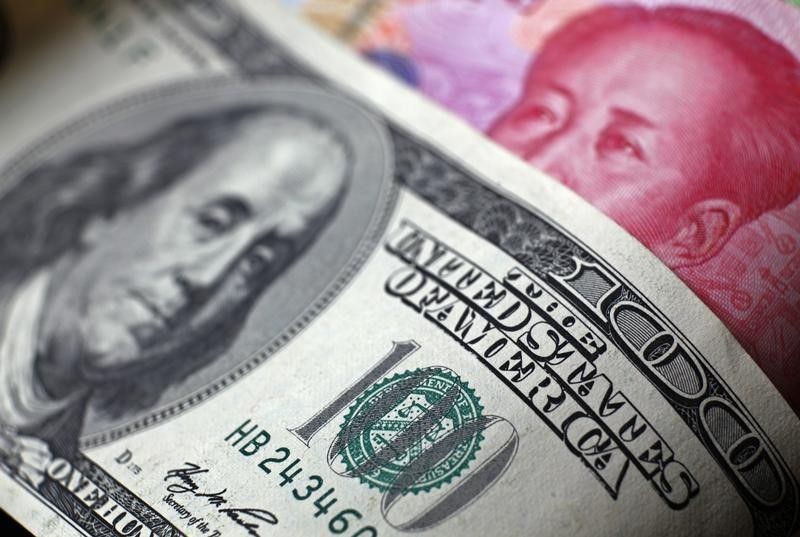Moody’s downgrades Senegal to Caa1 amid rising debt concerns
Investing.com-- Most Asian currencies weakened on Monday, with the Chinese yuan fragile in the face of limited relief on U.S. trade tariffs, while concerns over more economic headwinds sent the dollar to three-year lows.
The Japanese yen remained an outperformer, trading near its strongest level in six months as demand for safe havens remained relatively high. The USD/JPY pair fell 0.3% to 143.09 yen.
Other Asian currencies were nursing steep losses in recent weeks as a dire trade war between the U.S. and China escalated over the past week, with both sides slapping steep trade tariffs on each other. But the White House indicated over the weekend that electronics will be exempt from President Donald Trump’s 145% tariffs on China, offering some relief.
Chinese yuan dips as Beijing sets weak midpoint; trade data positive
The Chinese yuan’s USD/CNY onshore pair rose 0.2% following another weak midpoint fix from the People’s Bank of China. The pair remained close to a 17-year high hit last week.
The PBOC set a weaker midpoint for seven of the past eight sessions, with Beijing seen bringing down the yuan to offset the impact of steep U.S. trade tariffs on the country. Trump had last week hiked tariffs on China to a staggering 145%, with Beijing retaliating with 125% tariffs.
Trade data showed China’s trade surplus ballooned past expectations in March, with exports rising substantially before the imposition of steep U.S. trade tariffs on China.
Beijing and Washington engaged in a bitter tariff exchange last week, with neither side showing any intent of backing down. While the exemption of electronics goods offers Chinese exporters some relief, it is only expected to be a temporary reprieve. Trump on Sunday signaled that he will announce separate tariffs on electronics this week, by as soon as Monday.
Dollar hits 3-yr low amid growing economic jitters
The dollar index and dollar index futures both sank to their lowest levels since April 2022 on Monday, extending a run of recent declines.
Despite some relief over U.S.-China tariffs, the dollar remained under pressure from heightened fears of a U.S. recession. The greenback was also dented by a sustained selldown in Treasuries, which saw yields rise sharply.
Federal Reserve officials said that they will step in to support the U.S. economy in the face of more strife, although this could entail interest rate cuts, which bode poorly for the dollar.
Several Fed officials are set to speak this week, most notably Chair Jerome Powell on Wednesday.
Broader Asian currencies moved in a flat-to-low range amid little relief over a bitter trade war between the U.S. and China.
The Singapore dollar’s USD/SGD pair fell 0.2% even as gross domestic product data read softer than expected for the first quarter of 2025. Singapore’s central bank also eased policy slightly for the second time this year.
The South Korean won’s USD/KRW rose 0.5%, while the Australian dollar’s AUD/USD pair rose 0.2%.
The Indian rupee’s USD/INR pair fell 0.4% in holiday-thinned trade.
